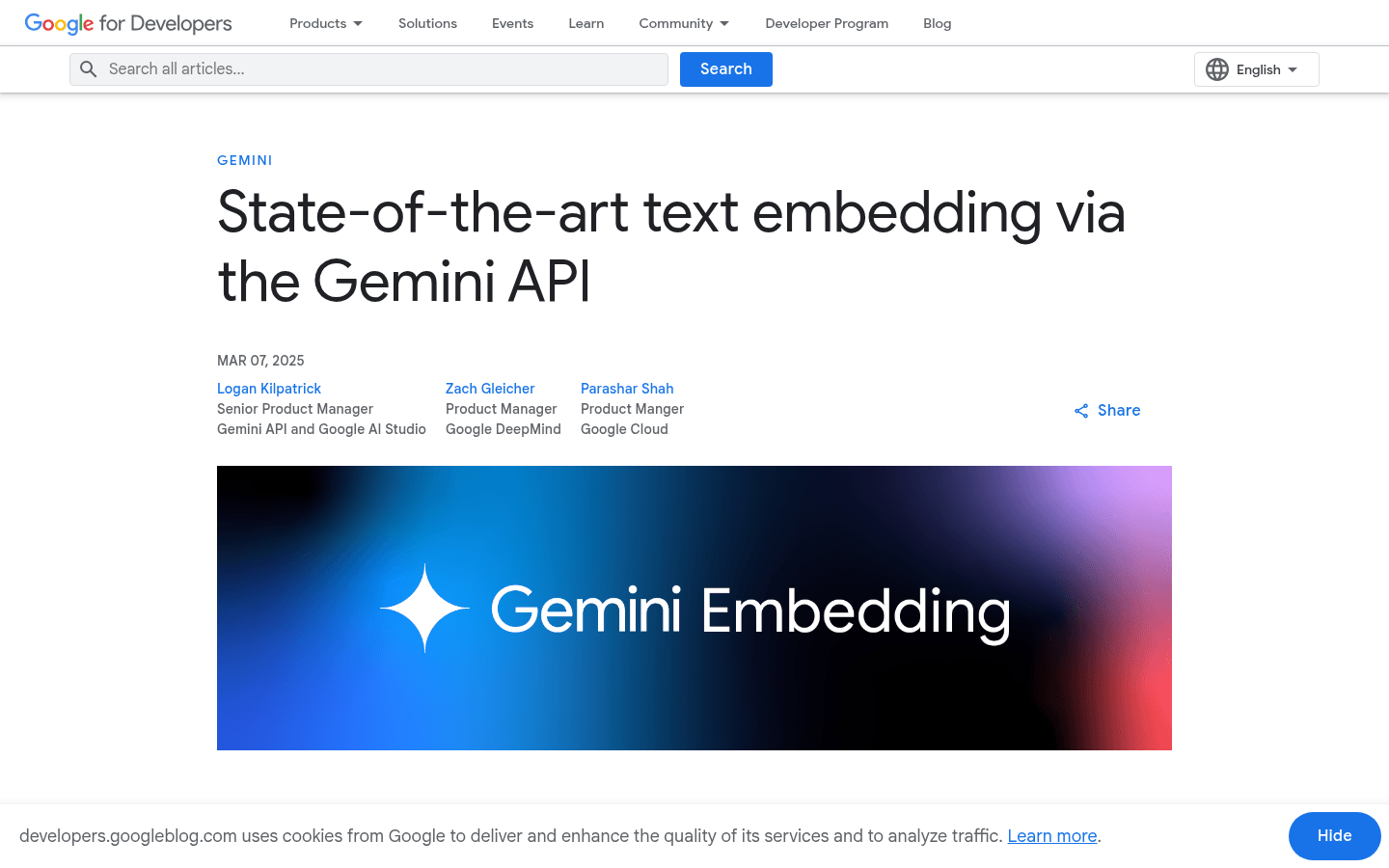

Gemini Embedding Text Embedding Model
Overview :
Gemini Embedding is an experimental text embedding model launched by Google, provided through the Gemini API. This model demonstrates outstanding performance in the Multilingual Text Embedding Benchmark (MTEB), surpassing previous top models. It can convert text into high-dimensional numerical vectors, capturing semantic and contextual information, and is widely used in scenarios such as retrieval, classification, and similarity detection. Gemini Embedding supports over 100 languages, features an 8K input token length and 3K output dimension, and incorporates Multi-Representation Learning (MRL) technology, allowing for flexible dimension adjustment to meet storage requirements. The model is currently in the experimental stage, and a stable version will be released in the future.
Target Users :
Gemini Embedding is suitable for developers, data scientists, and enterprise users to build efficient text processing systems, such as intelligent retrieval, recommendation systems, text classification, and similarity detection. It helps users quickly implement complex natural language processing tasks, reducing development costs and time.
Use Cases
Enterprise internal search system: Quickly retrieve relevant documents using Gemini Embedding to improve search efficiency.
Content recommendation platform: Use text embedding technology to recommend relevant articles or products to users.
Academic research: Analyze large amounts of literature data to extract key information and trends.
Features
Provides high-precision text embedding, capturing semantics and context
Supports multilingual text processing in over 100 languages
8K input token length, capable of handling long text and code
3K output dimension, providing high-precision semantic representation
Multi-Representation Learning (MRL), flexibly adjusting dimensions to optimize storage and performance
How to Use
1. Register and obtain a Gemini API key. Visit the official Google Developers documentation for more information.
2. Use the Python client library (as shown in the example code) to call the Gemini Embedding model.
3. Input text into the model to obtain embedding vectors.
4. Use the embedding vectors for further processing based on the application scenario (e.g., retrieval, classification).
5. Adjust model parameters (such as input length and output dimension) as needed to optimize performance.
Featured AI Tools

Gemini
Gemini is the latest generation of AI system developed by Google DeepMind. It excels in multimodal reasoning, enabling seamless interaction between text, images, videos, audio, and code. Gemini surpasses previous models in language understanding, reasoning, mathematics, programming, and other fields, becoming one of the most powerful AI systems to date. It comes in three different scales to meet various needs from edge computing to cloud computing. Gemini can be widely applied in creative design, writing assistance, question answering, code generation, and more.
AI Model
11.4M
Chinese Picks

Liblibai
LiblibAI is a leading Chinese AI creative platform offering powerful AI creative tools to help creators bring their imagination to life. The platform provides a vast library of free AI creative models, allowing users to search and utilize these models for image, text, and audio creations. Users can also train their own AI models on the platform. Focused on the diverse needs of creators, LiblibAI is committed to creating inclusive conditions and serving the creative industry, ensuring that everyone can enjoy the joy of creation.
AI Model
6.9M













